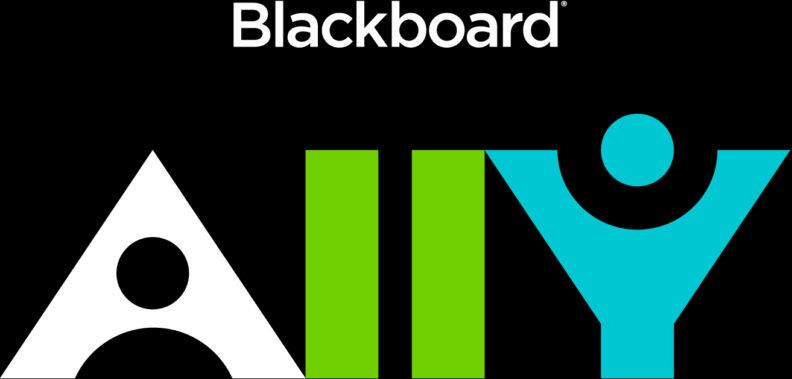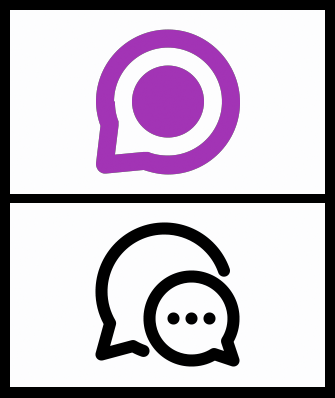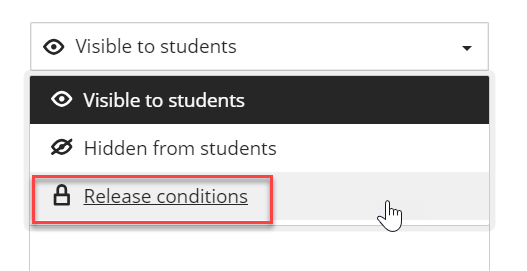Durham Blackboard Users Conference 2025
The beginning of April saw the arrival of the annual Blackboard Users Conference, hosted at Durham and bringing together participants from around the world. The conference covers a range of educational technology tools and use cases, and is distinctive because it is run by users, for users. This means that the sessions often have an informal, discursive feel, openly addressing challenges as well as successes to help the user community learn together. Jen and Julie attended from the Science Digital Education team, along with colleagues from DCAD who organise the event. This year’s theme was around personalised learning. Here are some of the things we learned…
Personalisation and learning
There was much discussion about what we mean by ‘personalisation’ in the context of learning. Some broad types or categories were proposed:
- Differentiated learning, where teachers provide specific learning materials and experiences tailored to particular groups of students. This could be based on performance, prior knowledge, area of interest and so on;
- Individualised learning, where teachers provide more granular options, often supported by adaptive tools (see below) that can deliver the right resource or task at the right time for each learner;
- Personalised learning, where the student has agency over the learning path. This allow students to progress on their own path and at their own pace.
All of these approaches can help to increase engagement, motivation and self-efficacy, as students can work their way through tasks and materials that feel relevant and achievable. They also have particular advantages in terms of equity and inclusion, and can help teachers to level the playing field somewhat for students who might be disadvantaged by standardised approaches. There are lots of advantages, but these approaches are not without challenges too. Discussions at the conference raised the following:
- Multiplying pathways and resources can create problems for scalability, and tensions when it comes to standardisation (as accrediting institutions, we still need to ensure that students have met the same learning outcomes and reached the same standards);
- Too much individualisation can mean losing the advantages of social learning and cohort building as students have less opportunities to work together;
- Even the idea of an “optimised” learning path can be problematic in itself – is it always possible (or helpful) to suggest that there is a single route through, and/or to force students to choose a particular route?
There are no simple answers to these, but they are all things that need to be weighed up when designing for personalised learning.
Supporting personalised learning
The presenters at the conference shared lots of ideas on how digital tools can support personalisation. Here are some of the options that were discussed.

Ally is a tool built in to Blackboard, that checks your teaching materials for accessibility and automatically converts them into a range of alternative formats. Did you know that students can choose to access your materials as HTML, ePub, MP3 audio and more?
Different formats accommodate diverse learning preferences, sensory needs, and accessibility requirements. This flexibility helps ensure that all learners, including those with disabilities or language barriers, can interact with material in ways that work best for them, ultimately improving understanding, retention, and participation.
Take a look at our post on Accessible Digital Content to find out more about how Ally can help and what options are available.

The AI Conversation tool in Blackboard can respond to individual students’ questions, according to the persona you set when you create the conversation. You can choose the Socratic Questioning option, that can help students to develop their thinking, or the Roleplay option, that can help them communicate and test out their ideas. The tool provides personalised responses tailored to each conversation, and keeps a record of them so that you can provide additional guidance and feedback.
Other tools also have some AI functionality that can provide similarly personalised support – for example, in FeedbackFruits, AI can provide guidance and feedback to students on their writing of discussion posts, reflective pieces and constructive feedback for their peers.
The Messages tool allows you to send a standard message out to a cohort of students, and you can contact individual students directly from the Class Register. But there are other options available too, to help students communicate with you and with each other:

- the Conversations tool allows you to add a discussion option to a specific activity or piece of course content;
- Discussions (shared with other students) and journals (private to the student and tutor) provide spaces for students to develop and share their learning;
Providing opportunities to ask questions about the material, or to share ideas on the topic, can create a richer and more personal learning experience for students.

In group work, students can share diverse perspectives on a topic, develop their communication skills and take on roles suited to their individual strengths. They can bring their personal reflections to the task in ways that may not be possible in a larger cohort, and support each other to learn by discussing concepts in terms that resonate with their peers.
Putting students into groups in Blackboard allows you to support this process. Each group you create will have a dedicated group space in Blackboard, where members can access discussion forums and group assignments tailored specifically to their work. It also allows you to customise the content and activities that you provide for them (see below).
For an even more personalised experience, you can create self-enrolment groups, which allow students to choose the group they’d like to join.

Blackboard’s release conditions tool allows you to tailor the provision of learning materials and activities, by making different versions available to different groups of students. But there are other potential uses for this tool too, outside of traditional groupwork. Did you know that you can use this feature to release specific content based on students’ performance in an assessment activity?
This can be really useful for supporting learning through formative assessment. In addition to providing feedback, you can automatically release additional support materials for students that have scored poorly, to help them revisit key concepts and identify misunderstandings. You can also release stretch activities for those that have scored highly, helping them further develop their knowledge and skills. Conditions can be quite broad, or really granular, creating a personalised learning path to mastery of the topic.
Blackboard also has some built in Analytics features to help you identify students that may need personalised support. These can be accessed from a few different places in a Blackboard course, depending on whether you’re looking at learning materials, grades, or individual students, and they all have a contact option available to help you reach out to the student.
The most commonly used tools are:
- Alerts. In the Gradebook settings, you can choose to be alerted if a student doesn’t log in for a number of days, if they miss due dates or if their grade falls below a specified level;
- The Course Activity Report will let you see at a glance how all your students are interacting with the Blackboard course;
- The Student Activity Log provides a more detailed picture of each student’s activity
Personalisation and assessment
Most of the literature around personalisation in higher education is focused on learning materials and experiences; there is much less discussion of assessment. This may be because personalising assessment presents a very particular challenge. On the one hand, assessment (and degree accreditation) is based on the premise that students can achieve the same learning outcomes to around the same standards – if we personalise the assessment, will we still be able to certify this? On the other hand though, we know that (to paraphrase Jan McArthur) sameness does not equal fairness, and providing the exact same assessment task will still advantage some students and disadvantage others. The session that Jen and Julie delivered at the conference looked at some of the ways to balance these concerns.
We touched on four different possibilities for personalisation in assessment:
- The provision of feedback can be personalised, whether by teachers themselves or through adaptive tools (see above). Students really value this and it can be hugely beneficial for motivation and for learning;
- Some assessment tasks allow for choice of topic, either as selection from a provided list, or as free choice (for example, if your task is to build a website, the topic may not matter if you are being assessed on the technical aspects);
- Assessment tasks can include reflective elements, allowing students to bring their own experiences in to the learning process;
- Some assessments can provide a choice of formats, for example allowing students to communicate their learning through written, audio or video files.
As the conference is a technical one, we then focused on the last point, and looked at how digital tools could support the choice of formats in assessment. There are lots of opportunities for this at Durham; in the Science faculty we have a broad set of tools available for use in digital assessment. This has lots of positives, as it allows staff and students to take advantage of specific features that best meet the needs of the assessment. Again though, there is a balance to be struck here; learning each new tool adds extraneous cognitive load for the students, and no-one wants to be faced with lots of unfamiliar (and inconsistent) interfaces when they have multiple deadlines looming!
We created a fun video to illustrate this point:
It does have a serious message though – for students to have a less stressful experience, it’s helpful for programme teams to communicate about the tasks they are setting in different modules, and to provide user guides, examples and practice assessments so build familiarity before the summative deadline. If you’d like help with any of this, please get in touch with the team.
Further reading
McArthur, J. 2016. “Assessment for Social Justice: The Role of Assessment in Achieving Social Justice.” Assessment and Evaluation in Higher Education 41 (7): 967–981. https://doi.org/10.1080/02602938.2015.1053429 (Accessed 31st March 2025)
O’Neill, G (2022) Student Choice of Assessment Methods: How can this approach become more mainstream and equitable? In Ajjawi, R., Tai. J., Boud, D. & Jorre de St Jorre, T. (Eds) Assessment for Inclusion in Higher Education: Promoting Equity and Social Justice in Assessment, 199-210, Routledge: Australia. Available at: https://www.taylorfrancis.com/chapters/oa-edit/10.4324/9781003293101-22/student-choice-assessment-methods-geraldine-neill (Accessed 31st March 2025)
